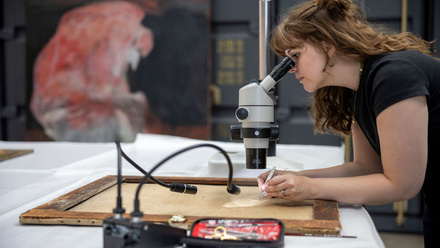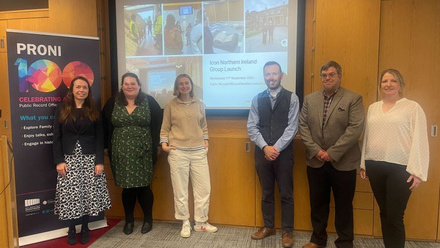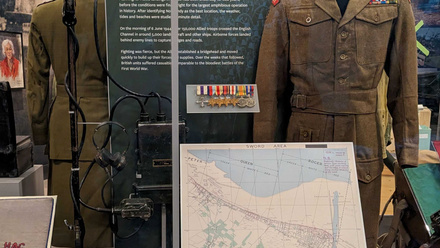Icon is working with Heritage Open Days to raise awareness of the work of conservators, particularly through matching local sites with experts.
Conservation Stations are being set up across the country for Heritage Open Days, where the public will be able to learn about the important work conservators do.
SPOTLIGHT
The Historic Dockyard Chatham: Behind-The-Scenes Collections Tours
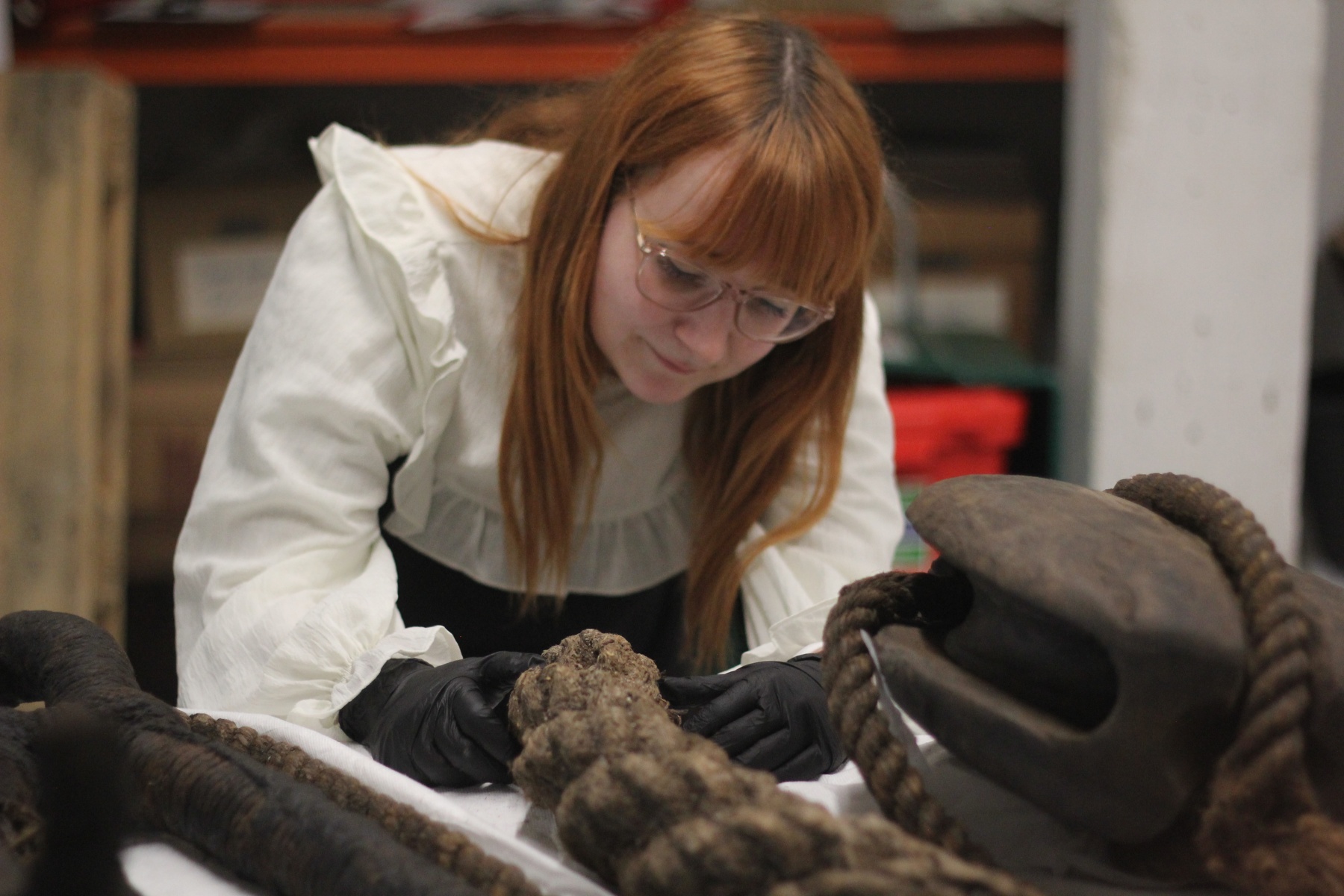
Join Icon member Karoline Sofie Hennum and her team in the brand-new conservation laboratory at The Historic Dockyard Chatham and discover how she applies chemistry and material science to understand the treatment needs of different materials. You'll also be able to discover the people and landscapes captured by early photography in their brand-new purpose-built archive.
Tour dates and times
Tuesday 13th September
10.00 – 11.30
14.00 – 15.30
Thursday 15th September
10.00 – 11.30
14.00 – 15.30
Book your free ticket here.
Conservator Karoline Sofie Hennum writes about why you shouldn't miss the Conservation Station at The Historic Dockyard Chatham:
This will the first time the new Conservation Laboratory and Archive Stack will be open to the public since the Fitted Rigging House renovation project was completed in 2019.
In the Fitted Rigging House, we carry out a large part of the collections work at Chatham dockyard, such as conservation treatments, digitisation projects, acquisition processing, and archiving.
These spaces are not normally open to the public and this is an exciting opportunity to gain behind-the-scenes access to 400 years of history at one of the best-preserved Age of Sail Dockyards in the country.
Those on the tour will have the chance to experience unique primary historical sources up close and the processes we use to ensure they will be preserved for future generations.
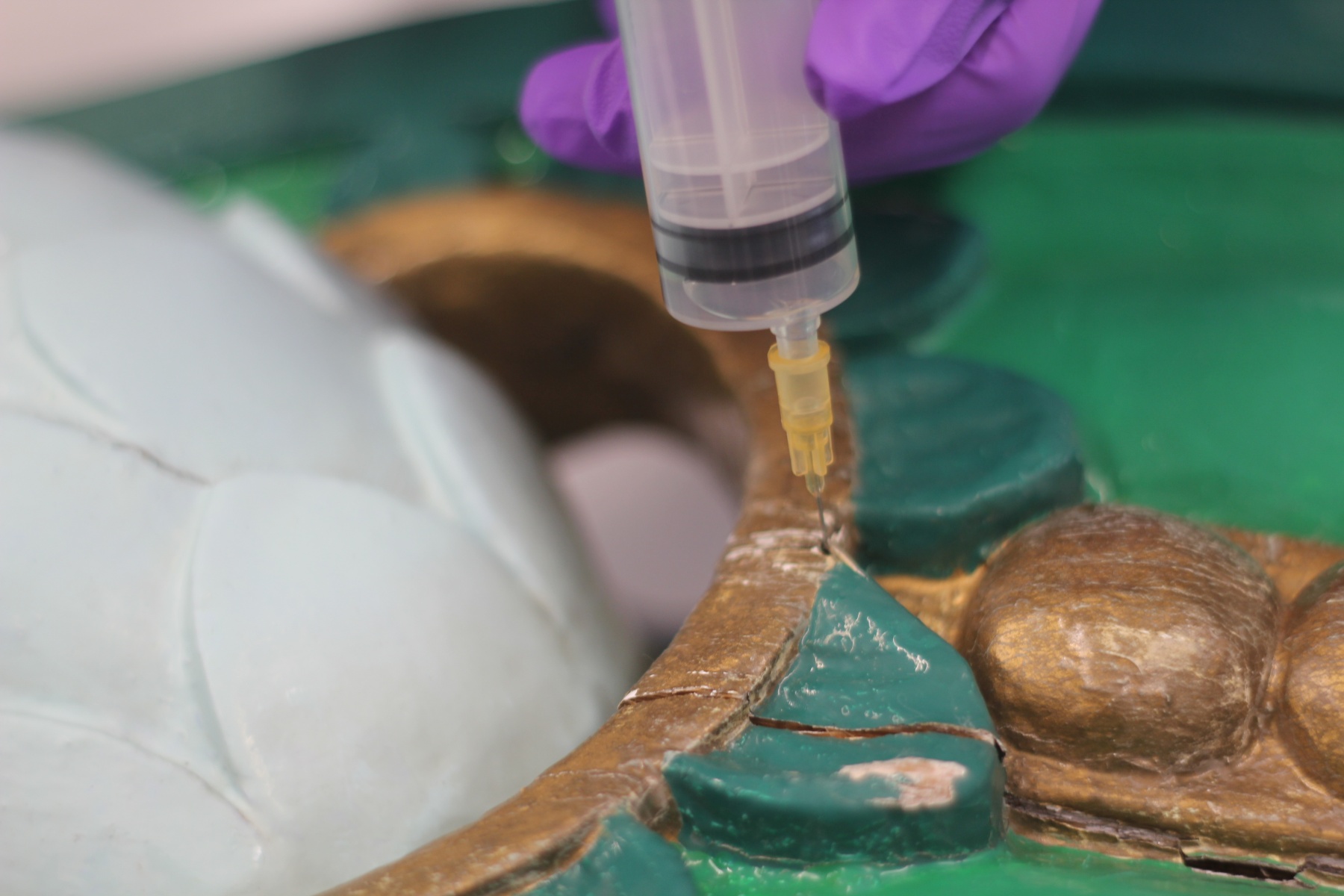
The Historic Dockyard Chatham is a unique mixed-use heritage and commercial site, easily commutable from London. It showcases over 400 years of shipbuilding, ropemaking and Naval history.
We are also starting to uncover alternative, formerly hidden, histories of those that worked here and contributed to the rich history of this fascinating place.
For Heritage Open Days this year, my team and I will give the public a tour of these spaces. Two of my colleagues, Helen and Vikkie, will give a tour around our brand-new Archive Stack, where they will showcase some key objects from our archive collection and demonstrate how large-scale digitisation projects are carried out in-house.
My colleague, Jasmine, and I will give a tour of our conservation laboratory. We have a studio photography set up in the laboratory, and Jasmine will demonstrate how we document collection items, as well as talk them through a recent uniform collection rehousing project.
Personally, I will focus on all things conservation for my part of the tour. Over the last couple of months, I have been spending a lot of time conserving a merman carving that had a large crack across the middle.
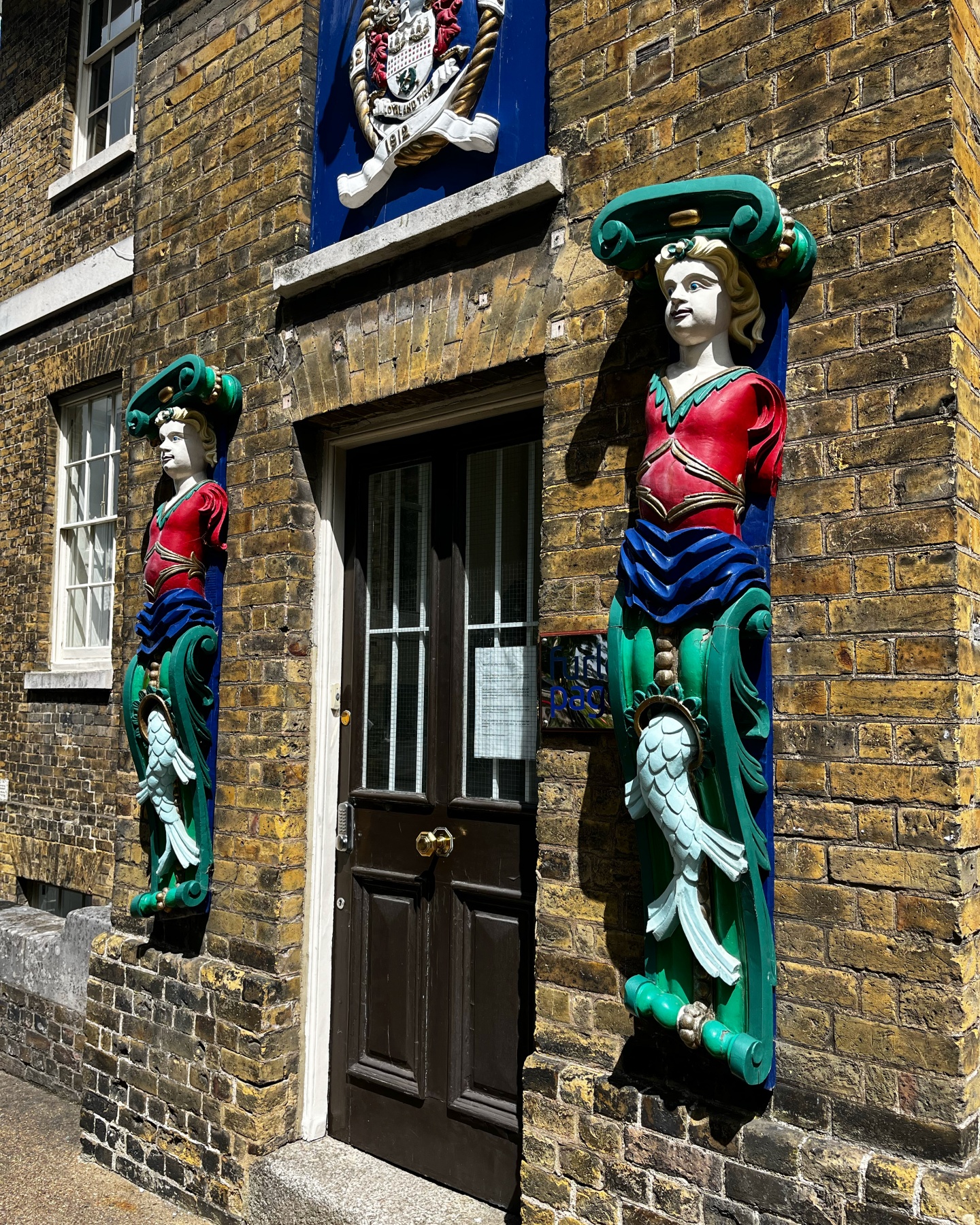
Unfortunately, due to being stored in outdoor environments, the carving had suffered quite severely from wood movements and a significant number of cracks had taken form on the surface and through its structure. This treatment will be completed in time for Heritage Open Days, so I will be talking you through the treatment from start to finish, as well as showing them “before pictures” to give you an idea of how much work has been carried out.
I will also introduce you to my upcoming conservation treatments: two chairs from the wardroom onboard HMS Cavalier (1944- 1972), which today is preserved as a National Destroyer Memorial in our No.2 Dry Dock. Unfortunately, the chairs have suffered from wear and tear over the years and are in great need of leather repairs. If time allows it, I will also show you some of the archaeological objects I have been conserving lately. These objects were all found on-site during renovation projects.
Book your free ticket here.
About the conservator
After receiving a BA in Cultural Heritage and Conservation Knowledge and an MA in Objects Conservation from the University of Oslo, I moved to the UK to pursue a career in conservation.
My first meeting with the sector here was an internship in Conservation Science at the Mary Rose Museum in 2020. After that, I completed a paid internship in Sustainability in Conservation/Collection Care at the University of Edinburgh and worked as a conservation assistant at National Trust’s The Vyne before starting my current role at The Historic Dockyard Chatham in January of this year.
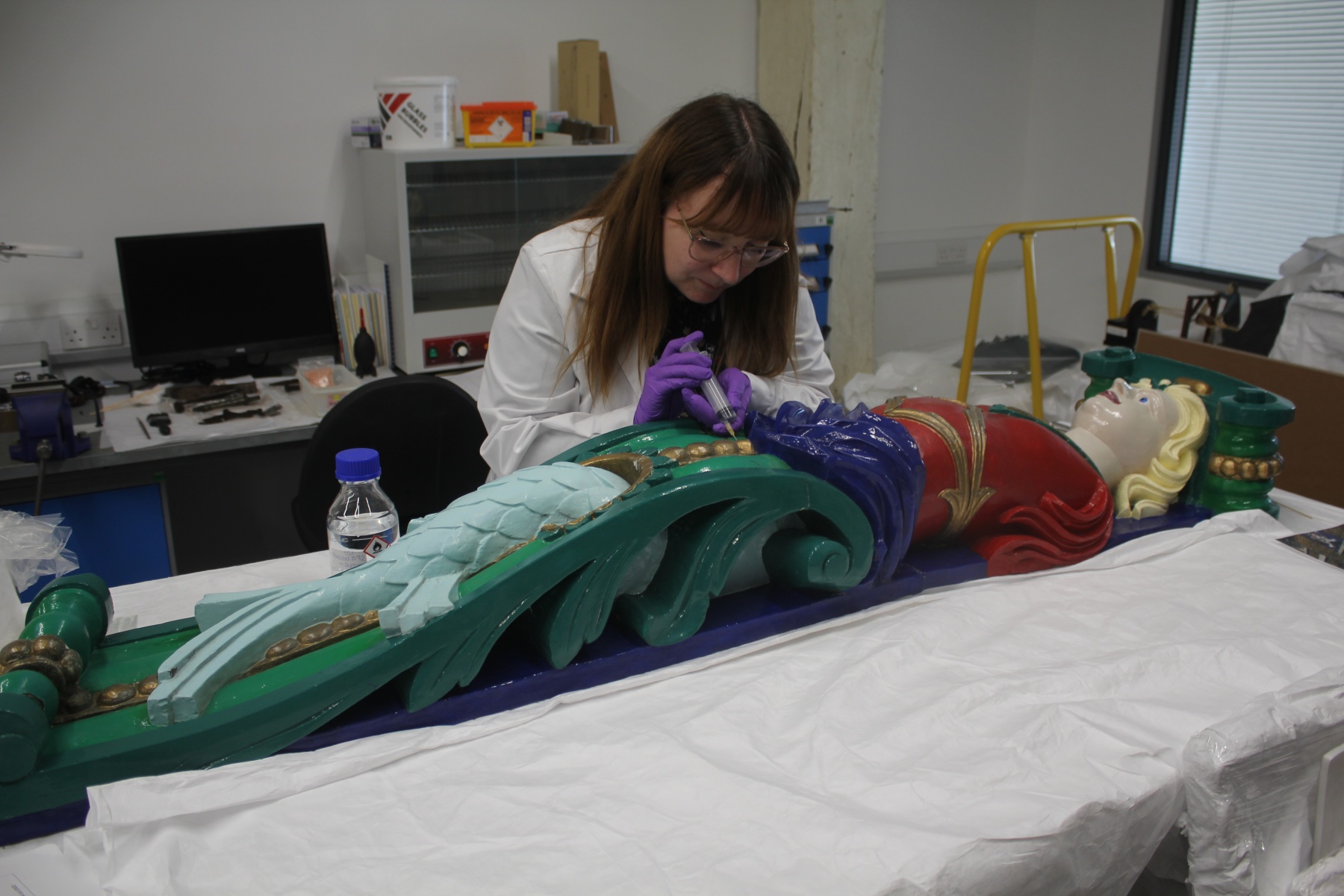
As the only in-house conservator, I am responsible for both Preventive Conservation and Objects Conservation on-site – and I love being able to combine the two as part of my role!
All my life, I have been fascinated by the sea, from underwater environments to the vessels travelling it.
As cliché as this might sound, I have always somehow felt connected to the sea, and it was when I realised that I can combine this fascination with conservation that I started my journey towards conservation of maritime objects and vessels.
For my MA dissertation, I explicitly chose to research treatment methods for waterlogged boats, and I was lucky to continue similar work during my time at the Mary Rose Museum. Every day, I make sure that I take a moment to let it sink in that I really get to work with and around maritime objects here at Chatham Dockyard. I am truly grateful for being able to ensure the long-term preservation of the objects and vessels that all have great significance to the naval history of Britain.




